A rigid rod leans against a vertical wall (y-axis) as shwon in figure. The other end of the rod is ion the horizontal floor. Point A is pushed downwards with constant velocity. Path of the centre of the rod is
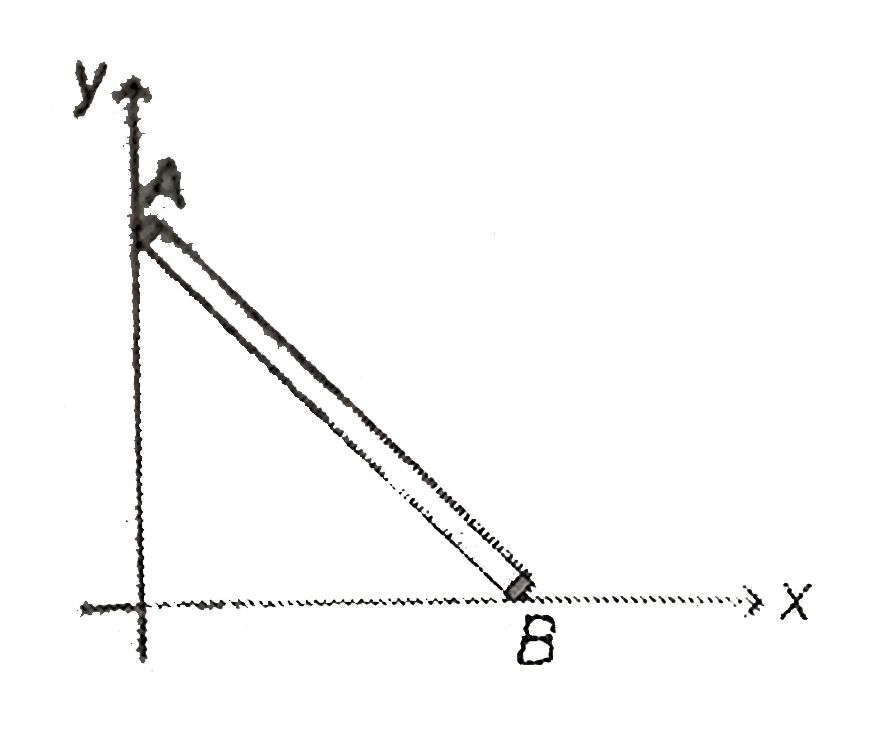
a straight line passing through origin
a straight line not passing through origin
a circle of radius l/2 and centre at origin
a circle of radius l/2 and centre not at origin
The correct Answer is:C
Step by step video & image solution for A rigid rod leans against a vertical wall (y-axis) as shwon in figure. The other end of the rod is ion the horizontal floor. Point A is pushed downwards with constant velocity. Path of the centre of the rod is by Physics experts to help you in doubts & scoring excellent marks in Class 12 exams.
Updated on:21/07/2023Topper's Solved these Questions
Similar Questions
A uniform ladder of mass 10 kg leans against a smooth vertical wall making an angle of 530 with it. The other end rests on a rough horizontal floor. Find the normal force and the frictional force that the floor exerts on the ladder
View SolutionA stationary uniform rod of mass 'm', length 'l' leans against a smooth vertical wall making an angle θ with horizontal floor. Find the normal force & frictional force that is exerted by the floor on the rod ?
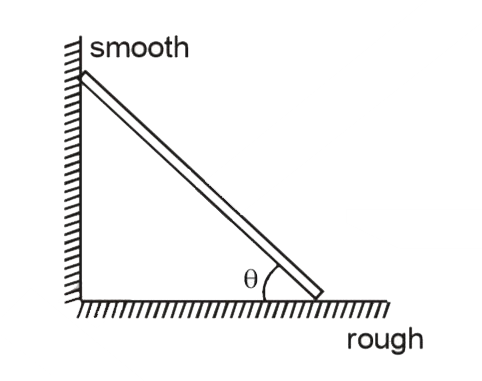
View Solution
Knowledge Check
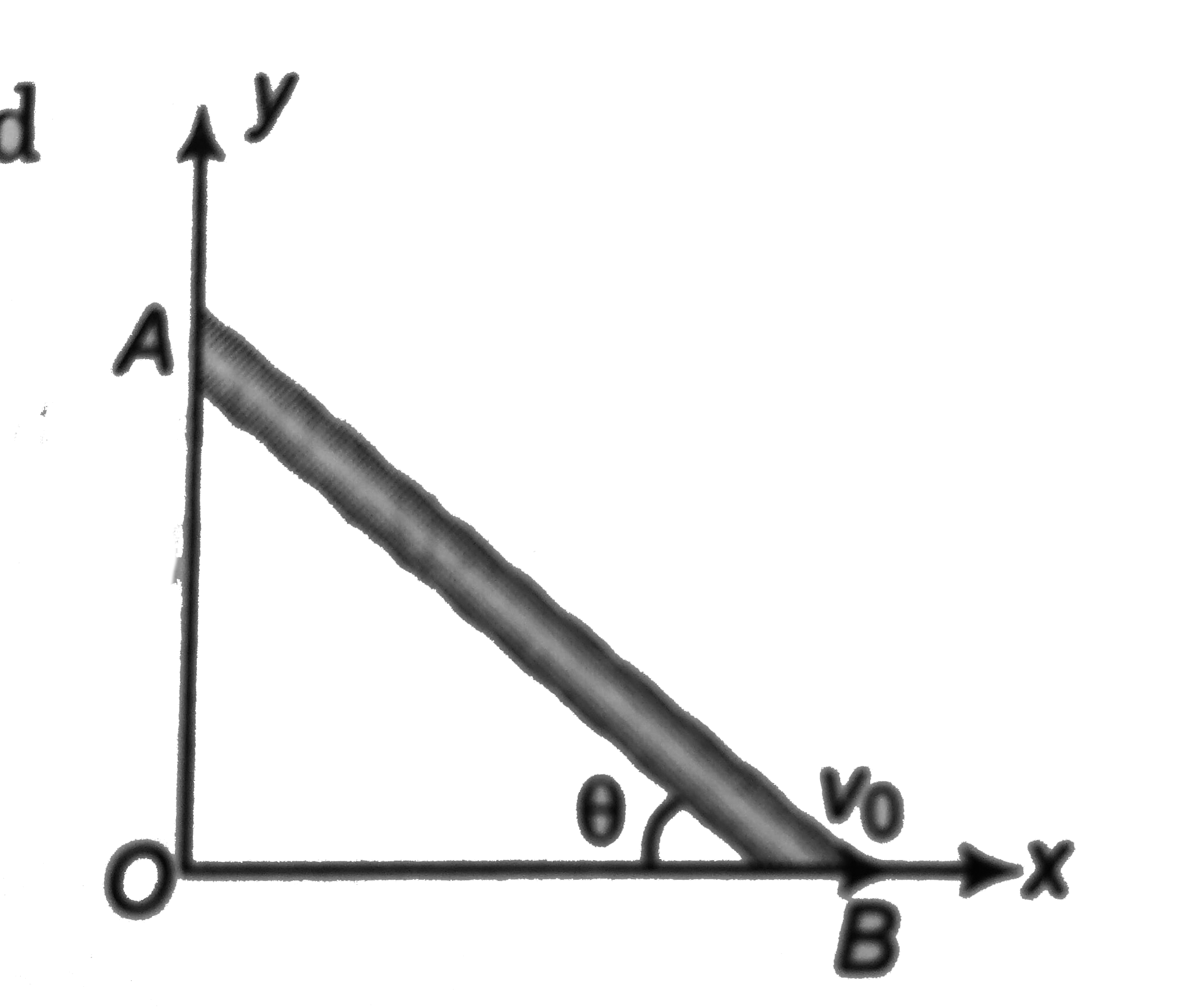
The end B of the rod AB which makes angle θ with the floor is being pulled with a constant velocity vv as shown. The length of the rod is l.AAt θ=37∘ velocity of end A is 43v0 downwardsBAt θ=37∘ angular velocity of rod is 5v03lCAngular velocity of rod is constantDvelocity of end A is constant.A rod leans against a stationary cylindrical body as shown in figure, and its right end sides to the right on the floor with a constant speed v. Choose the correct option (s)
 Athe angular speed ω is _Rv2(2x2−R2)x2(x2−R2)3/2Bthe angular acceleration α is Rvx√x2−R2Cthe angular speed ω is Rvx√x2−R2Dthe angular acceleration α is −Rv2(2x2−R2)x2(x2−R2)3/2
Athe angular speed ω is _Rv2(2x2−R2)x2(x2−R2)3/2Bthe angular acceleration α is Rvx√x2−R2Cthe angular speed ω is Rvx√x2−R2Dthe angular acceleration α is −Rv2(2x2−R2)x2(x2−R2)3/2A rigid rod is placed against the wall as shown in figure. When its velocity of lower end is 10ms−1 and its base makes un angle a=60∘ with horizontal, then the vertical velocity of its end B will be
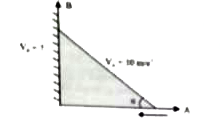 A10√3B10/√3C5√3D5/√3
A10√3B10/√3C5√3D5/√3
A rod od length l is moving in a vertical plane (x−y) when the owest point A of the rod is moved with a velociy v. find the a angular velocity of the rod and b velocity of the end B.
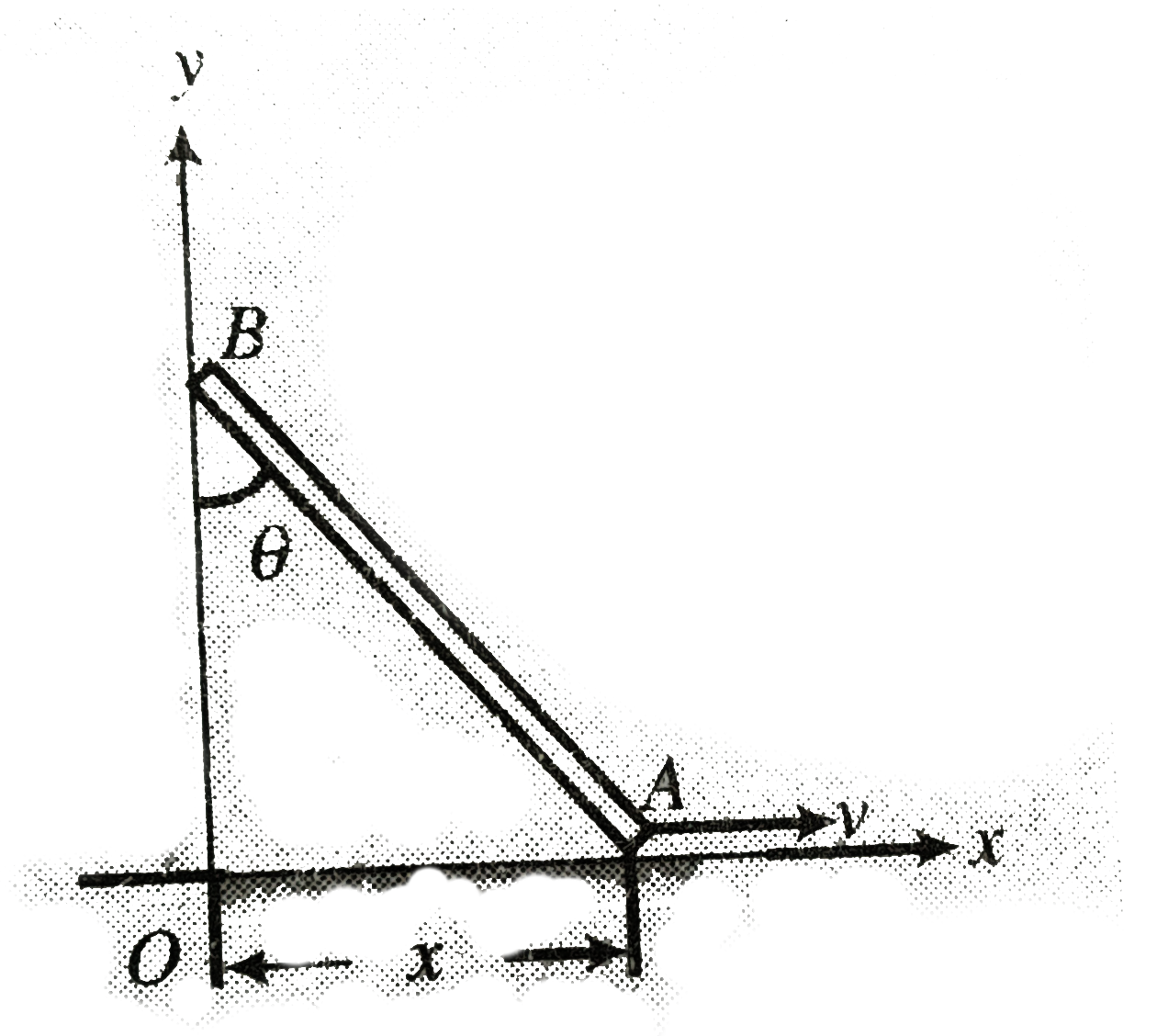
View SolutionA uniform rod of length l is held vertically on a horizontal floor fixing its lower end, the rod is allowed to fall onto the ground. Find (i) its angular velocity at that instant of reaching the ground (ii) The linear velocity with which the tip of rod hits the floor.
View SolutionA homogeneous rod of length 2l leans against a vertical wall at one end and against a smooth stationary surface at another end. What function y (.x) must be used to describe the cross section of this surface for the rod to remain in equilibrium in any position even in the absence of friction? Assume that the rod remains all the time in the same vertical plane perpendicular to the plane of the wall.
View SolutionA rod length L is held vertically on a smooth horizontal surface. The top end of the rod is given a gentle push. At a certain instant of time, when the rod makes an angle θ with horizontal the velocity of COM of the rod is v0. The velocity of the end of the rod in contact with the surface at that instant is:
View SolutionA rod of length l is siding such that one of its ends is always in contact with a vertical wall and its other end is always in contact with horizontal surface. Just after the rod is relased from rest, the magnitude of acceleration of end points of the rod is and b respectively. The angular acceleration of road at this istant will be
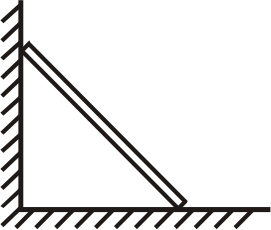
View Solution
